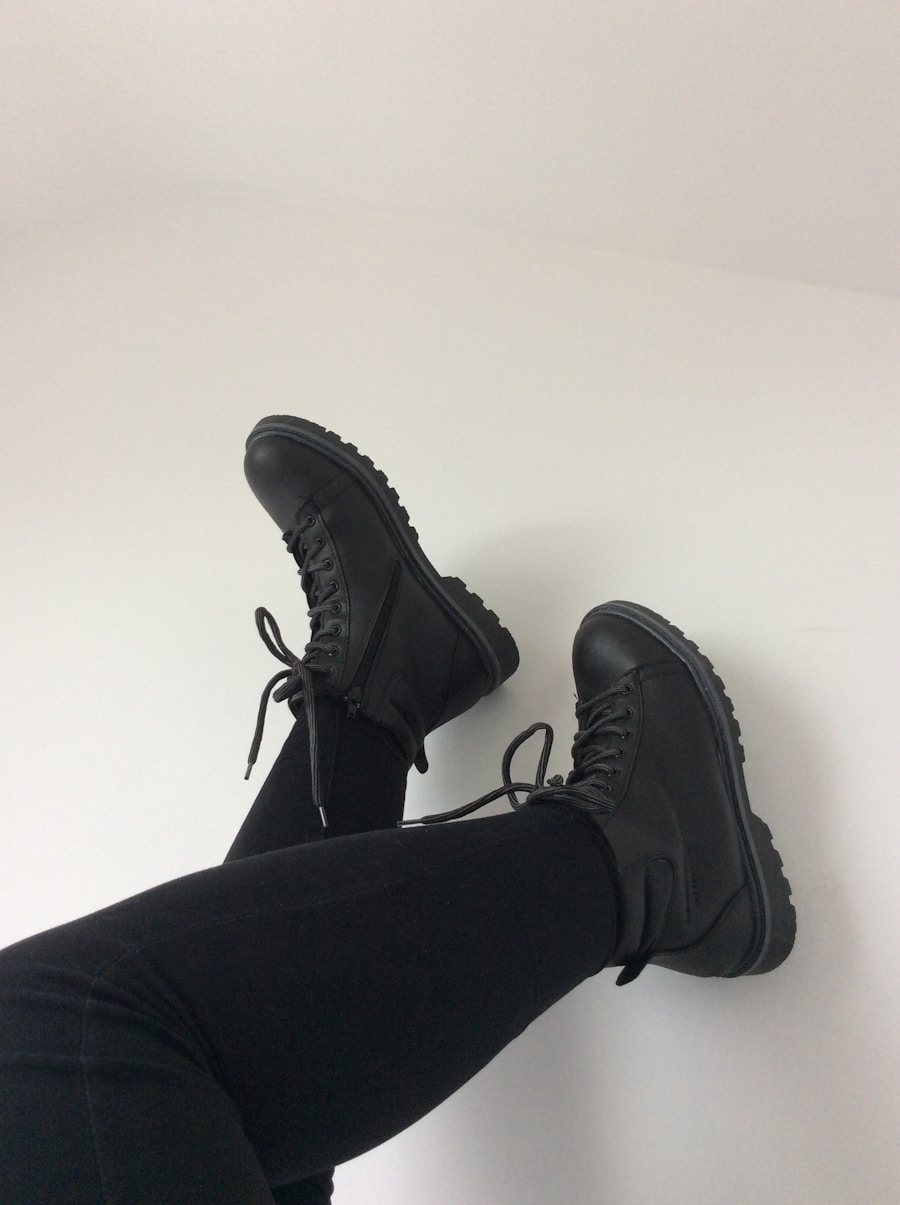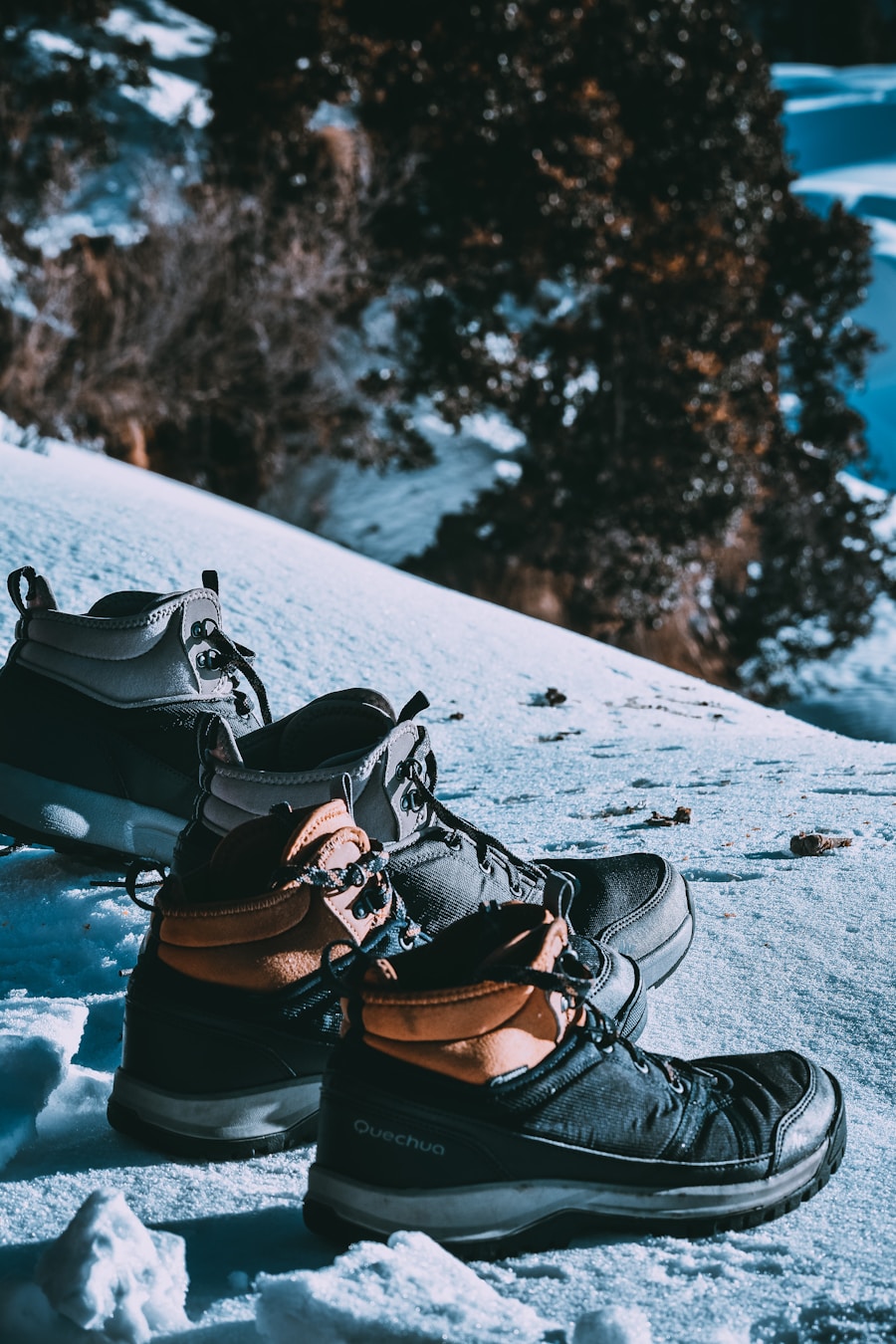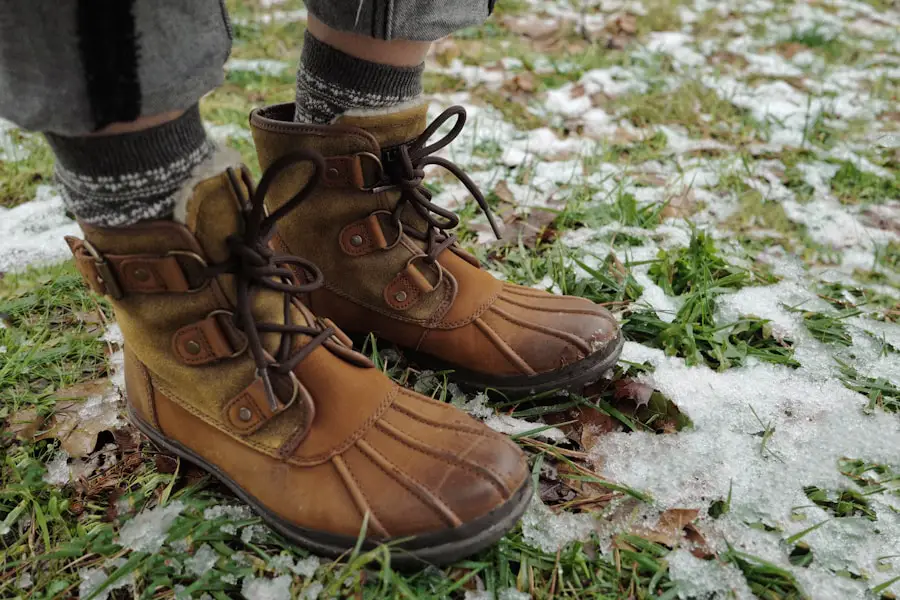Proper footwear is a cornerstone of any successful outdoor adventure, particularly when it comes to hiking. The right shoes can mean the difference between a pleasant trek through nature and a painful ordeal that leaves you limping back to your car. Hiking often involves traversing uneven terrain, steep inclines, and potentially hazardous conditions, all of which can put immense strain on your feet and ankles.
Wearing appropriate footwear not only enhances comfort but also significantly reduces the risk of injuries such as blisters, sprains, and fractures. Moreover, the psychological aspect of wearing the right shoes cannot be overlooked. When hikers feel secure in their footwear, they are more likely to focus on the beauty of their surroundings rather than the discomfort of their feet.
This mental comfort can enhance the overall experience, allowing individuals to immerse themselves in nature without the distraction of foot pain or instability. Thus, investing in proper hiking boots is not merely a matter of physical safety; it also contributes to a more enjoyable and fulfilling outdoor experience.
Key Takeaways
- Proper footwear is crucial for hiking to prevent injuries and provide support
- When choosing hiking boots, consider factors such as terrain, weather, and personal preferences
- Hiking boots offer benefits such as ankle support, traction, and durability compared to other footwear options
- Different types of hiking boots include lightweight, midweight, and heavyweight options for various hiking conditions
- Finding the right fit for hiking boots involves trying on different sizes, considering sock thickness, and testing for comfort and support
Factors to Consider When Choosing Hiking Boots
When selecting hiking boots, several critical factors must be taken into account to ensure that they meet your specific needs. One of the foremost considerations is the type of terrain you will be navigating. For instance, rocky trails may require boots with stiffer soles for better support and protection against sharp objects, while softer trails might allow for more flexible footwear.
Additionally, the climate plays a significant role; waterproof boots are essential for wet conditions, while breathable materials are preferable for warmer climates to prevent overheating and moisture buildup. Another important factor is the fit of the boot. A well-fitting boot should provide ample room in the toe box while ensuring that the heel is snug to prevent slipping.
This balance is crucial for maintaining comfort over long distances. Furthermore, consider the weight of the boots; lighter options can reduce fatigue during extended hikes, while heavier boots may offer more protection and durability. Finally, take into account any specific features that may enhance your hiking experience, such as ankle support for stability on uneven ground or traction patterns on the sole for better grip.
Hiking boots offer distinct advantages over other types of footwear, such as running shoes or casual sneakers. One of the primary benefits is their construction, which is specifically designed to withstand the rigors of outdoor activities. Hiking boots typically feature reinforced toe caps and rugged outsoles that provide superior traction on various surfaces, from muddy trails to rocky inclines.
This specialized design helps prevent slips and falls, which are common hazards in outdoor environments. In contrast, running shoes or casual footwear often lack the necessary support and durability for hiking. While they may be comfortable for short walks or urban settings, they generally do not provide adequate ankle support or protection against sharp rocks and roots.
Additionally, hiking boots are often made from materials that are more resistant to water and abrasion, ensuring that your feet remain dry and protected even in challenging conditions. This level of protection is crucial for maintaining foot health during long hikes, where exposure to moisture and rough terrain can lead to blisters and other injuries.
Exploring Different Types of Hiking Boots

Hiking boots come in various styles, each tailored to specific hiking needs and preferences. One popular category is backpacking boots, which are designed for long-distance hikes with heavy loads. These boots typically feature a stiffer sole for added support and cushioning to accommodate the weight of a backpack.
They often extend above the ankle for enhanced stability on uneven terrain, making them ideal for multi-day treks through rugged landscapes. Another type is day hiking boots, which are lighter and more flexible than backpacking boots. These are suitable for shorter hikes where minimal gear is carried.
They provide sufficient support without being overly cumbersome, making them a favorite among casual hikers. Additionally, there are specialized options like mountaineering boots designed for technical climbs and winter hiking boots equipped with insulation and waterproofing features for cold weather conditions. Each type serves a unique purpose, allowing hikers to choose footwear that aligns with their specific activities and environments.
Tips for Finding the Right Fit
| Factors | Importance |
|---|---|
| Company culture | High |
| Job responsibilities | High |
| Work-life balance | Medium |
| Opportunities for growth | High |
| Location | Medium |
Finding the right fit for hiking boots is essential for comfort and performance on the trail. One effective strategy is to try on boots at the end of the day when your feet are slightly swollen from daily activities; this will give you a more accurate sense of how they will feel during a hike. When trying on boots, wear the same socks you plan to use on your hikes to ensure a proper fit.
Pay attention to how the boot feels around your heel; it should be snug but not painfully tight, as this will help prevent blisters. Another important aspect is to test the toe box by walking around in the boots. Your toes should have enough room to wiggle without feeling cramped against the front of the boot.
Additionally, consider how the boot feels when you walk downhill; your toes should not be hitting the front of the boot excessively. If possible, walk on an incline or decline in the store to simulate trail conditions. Finally, remember that different brands may have varying sizing standards; therefore, it’s wise to try multiple brands and styles before making a decision.
Maintaining and Caring for Hiking Boots
Cleaning Your Boots
After each hike, it’s essential to clean your boots thoroughly to remove dirt, mud, and debris that can cause wear and tear. Use a soft brush or cloth to wipe down the exterior and remove any caked-on mud from the soles.
Caring for Leather Boots
For leather boots, applying a specialized leather cleaner can help maintain their suppleness and prevent cracking.
Waterproofing and Storage
Waterproofing is another critical aspect of boot care. Many hiking boots come with built-in waterproof membranes; however, these can wear out over time. Regularly applying a waterproofing treatment can help restore this barrier and keep your feet dry during wet conditions. Additionally, storing your boots in a cool, dry place away from direct sunlight will help prevent materials from degrading due to heat exposure. By taking these steps, you can ensure that your hiking boots remain reliable companions on all your outdoor adventures.
Alternatives to Hiking Boots for Different Trail Conditions

While hiking boots are often recommended for their support and protection, there are alternative footwear options that may be more suitable depending on specific trail conditions or personal preferences. Trail running shoes have gained popularity among hikers who prefer a lighter option that still offers decent traction and flexibility. These shoes are designed for speed and agility on trails but may lack some of the ankle support found in traditional hiking boots.
For those venturing into warmer climates or less rugged terrain, sandals designed for hiking can be an excellent alternative. These sandals often feature adjustable straps for a secure fit and provide breathability while still offering some level of protection against rocks and roots. However, they may not be suitable for all trail conditions; hikers should assess whether their chosen route requires more substantial footwear before opting for sandals.
Ultimately, understanding the specific demands of your hike will guide you in selecting appropriate footwear.
Making the Decision: Do You Really Need Hiking Boots?
The decision of whether or not to invest in hiking boots ultimately depends on individual preferences and specific hiking circumstances. For serious hikers who frequently tackle challenging trails with heavy packs, investing in high-quality hiking boots is often essential for comfort and safety. The support they provide can help prevent injuries during long treks over uneven terrain.
Conversely, casual hikers who stick to well-maintained paths may find that lighter alternatives suffice for their needs. If you primarily hike in dry conditions or shorter distances, trail running shoes or even sturdy sneakers might be adequate options. It’s crucial to evaluate your hiking habits, terrain preferences, and comfort levels when making this decision.
Ultimately, understanding your unique requirements will lead you to choose footwear that enhances your outdoor experiences while keeping your feet happy and healthy.
If you’re planning a hiking trip, you may be wondering if you need hiking boots. According to a recent article on
